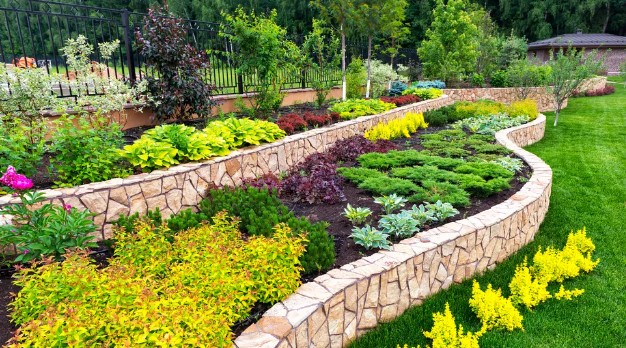The focus on the environment and sustainable practices has grown immensely in recent years, with countless industries contributing to a greener and cleaner world. One of the sectors leading the charge is the landscaping industry.
Landscapers play a vital role in shaping our outdoor spaces and are taking on environmental responsibilities.
In this article, we will explore the innovative ways in which landscapers are adopting sustainable practices and how they are helping create an eco-friendly future. Read more!
Sustainable Landscaping: An Introduction and its Importance
Sustainable landscaping is a domain in which individuals, including some of Sacramento's landscapers, are making notable strides. This technique comprises a range of methods that aim to alleviate pollution, limit waste, save resources, and foster a respected symmetry between the natural and built environments.
Given the climate changes and resource depletion issues troubling our world, sustainability should be at the heart of our actions. Thus, within the landscaping realm, professionals, particularly those considered the best Sacramento landscapers, have begun to harness sustainable protocols, resources, and strategies to amplify spaces' inherent allure, benefiting Earth's health.
Landscapers' Approach to Sustainable Practices
Landscape professionals use various Earth-friendly methods to develop green-oriented spaces for their clientele. Each approach has distinct merits, from improved soil nutrition and reduced water usage to preserving indigenous ecosystems.
Outlined below are primary sustainable strategies being employed in the landscape sector.
Xeriscaping
The term originates from "xeros" (dry) and "landscape" and represents design practices aimed at developing landscapes that require little to no water. Xeriscaping is crucial in regions experiencing frequent droughts or water shortages.
Landscape professionals prefer drought-tolerant flora like succulents that require limited irrigation. Using this water-conscious method, landscape professionals contribute to water conservation resource management and develop visually engaging spaces.
Indigenous Flora Incorporation
Sustainable landscaping considerably involves using native plants within landscape design. These plants, inherently adaptable to local weather and soil conditions, require less water, maintenance, and pesticides.
By opting for this methodology, landscapers create picturesque landscapes with a mixed set of textures and hues, support the conservation of local ecosystems, and contribute to wildlife habitat preservation.
Soil Nutrition Enhancement
Healthy soil factors crucially into flourishing landscapes. Landscaping professionals focus on enhancing soil health via methods such as composting and mulching, proving immensely beneficial in conserving soil moisture, curbing weed expansion, and controlling soil temperature, ultimately reducing pesticide usage.
Moreover, using natural fertilizers mitigates the adverse environmental effects of conventional synthetic alternatives.
Rainwater Collection
Rainwater collection or harvesting is an increasingly popular practice in sustainable landscaping. Landscape professionals design systems to accumulate, preserve, and reuse rainwater as a sustainable source.
This practice lessens dependence on municipal water supply, forestalls stormwater overflow, and encourages local water conservation.
Permeable Paving Techniques
Landscaping professionals participate in sustainable practices using permeable paving materials like gravel, concrete, and pavers.
These materials enable water seepage into the ground, preventing overflow and lessening the burden on stormwater management systems.
Additionally, permeable paving aids in natural aquifer recharge and mitigates heat island effects typical of traditional non-permeable surfaces.
Inclusive Pest Management (IPM)
Landscaping professionals aim to diminish harmful chemical usage by adopting inclusive pest management approaches and leveraging biological, mechanical, and cultural controls to keep pests within acceptable bounds.
By using beneficial insects or planting pest-resistant flora, landscaping professionals decrease the need for harmful pesticides, fostering a healthier landscape.
Landscaper Certification Programs for Green Practices
Numerous certification programs bear witness to a landscaper's commitment to sustainable practices. For example, the Landscape Industry Certified program, provided by the National Association of Landscape Professionals, aims to showcase the skills and know-how necessary for sustainable landscaping.
Furthermore, the Sustainable Landscape Professional (SLP) certification, given by the Association of Professional Landscape Designers, acknowledges individuals proficient in green landscape planning and design.
The Gains of Sustainable Landscaping
The benefits of teaching sustainable practices in landscaping are diverse:
Lowered water and energy consumption while still maintaining appealing landscapes.
Uplifted air and soil quality via natural fertilizers and pest management techniques.
Protection of biodiversity by conserving indigenous plants, animals, and ecosystems.
Mitigated waste production via composting and recycling.
Enhanced property value owing to appealing, eco-friendly, and low-maintenance landscapes.
Increased awareness of environmental issues and sustainability among clients and the broader public.
Final Thoughts
Sustainable landscaping transcends fleeting trends. It is now crucial in global efforts to safeguard our planet and its finite resources. Landscape professionals are pioneering eco-friendly practices and innovative solutions, crafting green spaces that balance beauty and functionality.
As environmental awareness rises, green landscaping will likely become a standard practice rather than an exception. By prioritizing sustainability, landscaping professionals exemplify commendable actions worthy of emulation by other industries—ensuring a secure, sustainable world for future generations.










